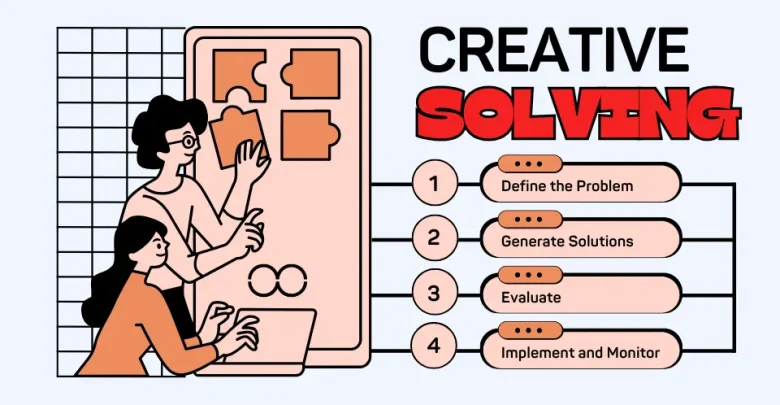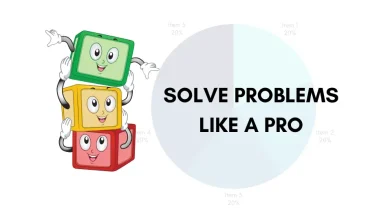10 Creative Problem-Solving Techniques to Boost Your Innovation at Work

Creativity isn’t something we either have or don’t have—it’s a skill that can be honed and developed, especially when it comes to solving problems in the workplace. Our ability to think outside the box is often limited by mental habits and assumptions we’ve formed over time. However, by deliberately applying creative problem-solving techniques, you can break free from these patterns and discover innovative solutions to business challenges, product development, or team dynamics.
Here’s a look at 10 strategies to boost your creative problem-solving skills and unlock your full potential at work:
1.Adopt a Strategic Framework
Creative problem-solving thrives with a clear, structured approach.
Collecting Information: Begin by gathering all relevant data, whether through customer feedback, research reports, or employee insights. The more information you have, the clearer the problem becomes.
Recognizing Patterns: Analyze the information for hidden connections or trends. Use brainstorming or mind mapping to challenge the problem’s boundaries and explore new angles.
Generating Solutions: Come up with multiple solutions, then test and refine them to find the most effective one.
Executing: Implement your solution, track the results, and iterate if necessary.
2.Cultivate Empathy
Understanding others’ perspectives is critical to creative problem-solving. Empathy allows you to see challenges from the viewpoint of colleagues, customers, or stakeholders, often leading to more meaningful and innovative solutions. For example, if a teammate hasn’t responded to your email, instead of getting frustrated, consider their workload or offer help.
3.Engage in a Hobby
Hobbies stimulate creativity by engaging your brain in new, challenging ways. When you step away from work to focus on something you enjoy—whether it’s painting, building models, or learning a new instrument—you give your brain a break, which can lead to unexpected insights. Plus, the problem-solving involved in hobbies can translate back into your work life.
4.Challenge Assumptions
The longer you’ve been doing something, the more likely you are to rely on past assumptions. To foster creativity, consciously question how you approach problems. What if I tried a completely different method? This opens up possibilities that might otherwise be overlooked.
5.Practice Persistence
Not every solution will come easily, but persistence is key. Some problems require more time, resources, or experimentation to resolve. By staying focused and committed, even when obstacles arise, you increase your chances of finding a successful solution. For example, an entrepreneur may need to adjust her business strategy multiple times before hitting the mark, but her dedication eventually pays off.
6.Question Standard Practices
Collaborating with others is a great way to challenge conventional thinking. If everyone in your industry is approaching a problem the same way, consider whether that method is truly the best. By proposing alternative solutions, you can often unlock more creative, effective strategies. A salesperson, for instance, might move away from cold calling and instead focus on understanding client needs for a more personal approach.
7. Leverage Past Experiences
Your past is full of valuable lessons. When facing new challenges, think back to similar situations and how you handled them. However, be careful not to rely too heavily on past assumptions. Instead, use those experiences as a guide while keeping an open mind for fresh solutions.
8.Become an Expert in Your Field
The more you know about your industry, the easier it becomes to innovate. As you deepen your technical skills and expertise, you’ll find it easier to spot connections and identify solutions that others might miss. For example, an illustrator looking to improve their work could dive into the details of lighting, texture, and perspective to enhance realism.
9.Regularly Practice Creative Problem-Solving
Just like any skill, creativity improves with practice. Continuously expose yourself to new challenges, either through attending industry conferences or learning new skills. By regularly engaging in creative problem-solving, you build the mental flexibility needed to tackle complex problems.
10.Ask for Help When Needed
Sometimes, the best way to find a creative solution is to seek advice from someone with a fresh perspective. Don’t hesitate to ask a colleague, mentor, or expert in your field for their thoughts. Their experience might help you see the problem in a new light or suggest an approach you hadn’t considered.
Demonstrating Creative Problem-Solving in Interviews
Employers want problem-solvers who can think creatively under pressure. When discussing your problem-solving skills in an interview, consider sharing examples that highlight:
Adding Constraints: Explain how narrowing the scope of a project led to a better outcome.
Removing Constraints: Describe how challenging an assumption helped you find an innovative solution.
Gaining Knowledge: Showcase how learning more about an industry, client, or technology enabled you to solve a difficult problem.
By incorporating these creative problem-solving techniques into your work routine, you’ll not only improve your ability to innovate but also position yourself as a more valuable asset to your team or organization.

